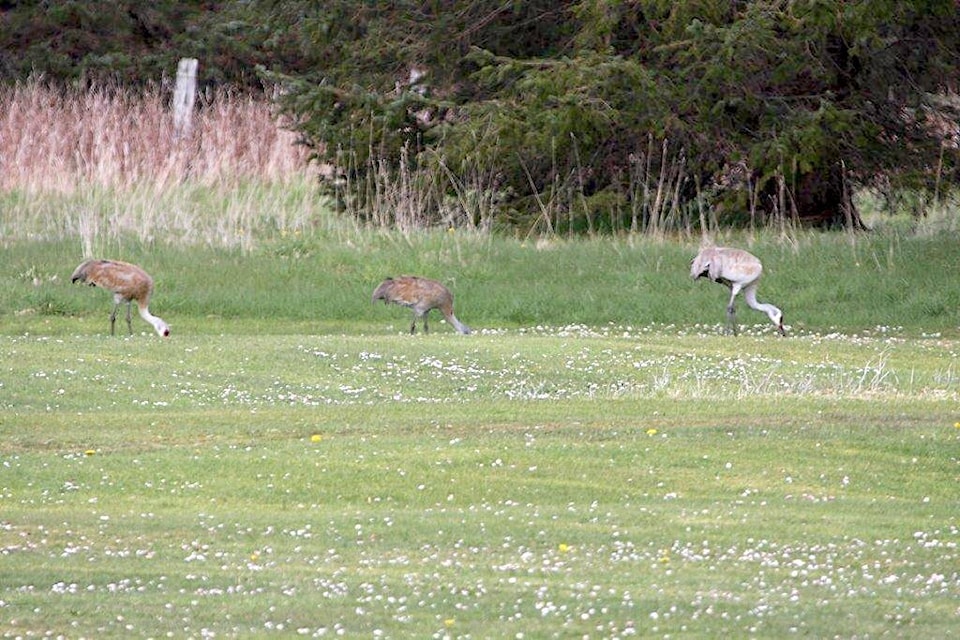By Margo Hearne
A small flock of White-fronted geese flew over this week. It’s the first group we’ve seen this fall; the usual skeins that laugh and call overhead have not yet materialised. When we used to walk our dog at midnight we would often hear the birds coming in from the storm to land in Delkatla. It was both eerie and heartening – good to know they were still around and strange to think they were in the air in the middle of the night.
Some naturalists debate whether or not some birds actually migrate at night. Of course, we know the small ones do. Sadly, they die by the thousand from hitting bright city lights. But the big ones? Some years ago, when we were doing the Breeding Bird Atlas, we reported on the Sandhill Cranes that flew through the mountain passes in Smithers during spring migration. When we visited there in spring, their calls woke us up as they flew low over town. When we reported this the editors questioned whether or not cranes migrated at night and wondered if, in fact, we were hearing things. We were. Just last week some visitors from Smithers told us how they would hear Sandhill Cranes throughout the night during migration almost every year. They were hearing things too.
Speaking of cranes, they seem to have gone south. The last sighting was on Thanksgiving weekend when what was possibly a family of three were seen along the banks of the Chown River and the flock that fed with the cattle in the farm north of Port Clements was gone by the first week in October. The birds were a source of keen interest and excitement for many island visitors who had never seen cranes before. There they were, just beside the highway, visible for all to see.
The cranes’ natural grey feathering returned before they left, after we had become accustomed to seeing them brownish-red all summer. Apparently, they preen by rubbing mud on their feathers. The mud is usually reddish here from the iron-rich soil and the brown drainage from the muskeg bogs. The feathers soak up the mud’s color like a sponge and it lasts all summer. Cranes might do this as camouflage during the nesting season to help them hide as they sit on the nest. After nesting season the rusty red wears off and the bird’s grey colouring returns.
Some years ago, the West Coast Crane Working Group (WCC) from Washington was interested in the cranes of Haida Gwaii. They thought the ones that nested here were black, but they are not. We still don’t know where “our” cranes come from or where they go in winter; none of the cranes the WCC banded showed up here although they nested along the mainland coast.
A chill wind is blowing again. The dreaded northeaster. Birds hunker against it and the sanctuary waits to give them shelter from the storm.
